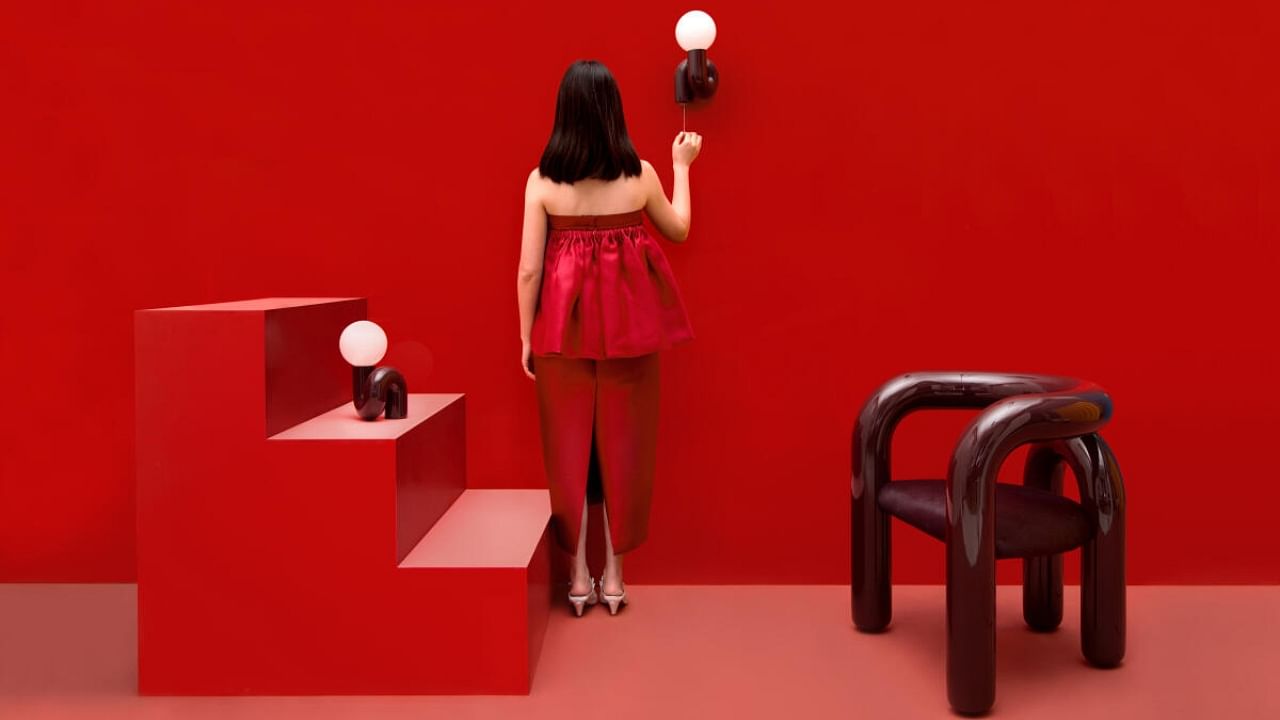

Chubby chic, a home decor trend that gained popularity in 2019 in Europe, is slowly making its way to India.
Architect and designer Prashanth Nandiprasad says several adjectives can describe the evolving trend but all of them point towards one aspect — comfort. “It is quirky, full, bulky, soft and rounded — a departure from minimalist aesthetics, which post-modernist furniture is synonymous with,” he explains. However, it has grown beyond offering just comfort.
He points out that the style first emerged in Italy, and has been making its way around the globe. “Post-modern furniture is also seeing a renaissance in India — especially with a mix of different materials, trims, and combinations. In India, chubby furniture is set to be its extension, as people might want to initially use it as an accent piece. The trend will likely undergo a transformation with Indian material and design sensibility, mixed and matched, and further assimilate through localisation,” he says, adding that the bulky aesthetic has always been favoured in India, irrespective of international trends.
While chubby furniture was earlier limited to commercial spaces, it has made its way into Indian homes, says Bengaluru-based interior designer Snehal Patil. “As chubby furniture saw popularity globally, we began to see it in offices and commercial spaces in India. Lately, people are welcoming these pieces into their homes,” she points out.
Quintessential characteristics
Bengaluru-based Home Canvas uses plush and soft upholstery fabrics to add a luxurious feel to its furniture. This makes the furniture “inviting”, believes Sandeep Sridhar, CEO. “We also use generous padding to add to the voluminous look and for the majority of our furniture, sturdy wood frames are commonly used as the structural base,” he adds. The polished wood gives the designs a sleek look. Lately, the company has seen an increase in enquiries for curvy and bulbous forms of furniture.
While the spectrum of chubby design remains wide, Justin Donnelly, co-founder of Jumbo, a New York-based design studio, shares the must-have characteristics for a piece of furniture to fall into the ‘chubby’ category.
There are four qualities to typically look for: short and thick members (like table legs), a lack of visible connections, a large and commodious seat, and a spongy or elastic quality.
“To get chubby chic right, pair simple, pudgy forms with luxurious materials and finishes. For example, we prefer dyed hair on the hide over upholstery and spray rubber over leather. Our goal is to achieve a lustrous surface finish without seams or unnecessary detailing. We want our furniture to be dematerialised,” he elaborates.
According to Justin, chubby furniture is simple forms that have been thickened. “Chubby is not a rejection of minimalism or embracing the maximal — it is a nod to comfort, an effort to soften the hard-edges of the minimal aesthetic,” he says.
Jumbo’s Neotenic and Creature Comfort collections are examples of chubby design. “The chubby style is not directly attributed to one designer or studio. We played a role in the conversation (of chubby furniture) by introducing the concept of neoteny — the retention of juvenile characteristics. Neoteny provides a framework for understanding why we might be compelled by pudgy or chubby forms, and how they might cognitively affect us,” adds Justin.
Snehal too believes chubby chic invokes a sense of calmness. “The soft edges and stubby feet can have a soothing effect when appropriately placed in a large enough
space. The furniture has been compared to cute animals because of the similar emotions it evokes,” he says.
Beyond comfort
In addition to warmth and comfort, the trend of chubby design also brings along a “sense of playfulness”, says Pervez Ahmed, founder of Xara Interiors.
“The appeal of chubby furniture extends beyond comfort, it also introduces a touch of playfulness into a space. Some of the pieces are whimsical. The rounded forms and exaggerated proportions capture lightheartedness and joy. Plus, a lot of designers are experimenting with bright and vibrant colours,” he says.
The trend is allowing designers rooms to experiment. From Faye Toogood’s Roly Poly chair to Konstantin Gircic’s Sam Son chair, the designs stray away from the minimalist aesthetic, muted tones and simple silhouettes.
“In a world that often demands perfection and uniformity, chubby furniture adds character and personality to interiors, making them more inviting and engaging,” he adds.
He points out that the rise in chubby furniture reflects a change in design philosophy. “This trend encourages us to reconsider conventional standards. Homeowners are no longer following the cookie cutter format and instead looking to create a sense of belonging,” he adds.
Impact of social media
Industry insiders point to social media trends currently dictating home interiors in India — in both Tier 1 and Tier 2 cities. “Influencer culture dictates a majority of the trends currently. Earlier, international trends would make it to India eventually but it would take a fair few months or even years. But now because of social media, trends travel much faster,” says Pervez.
Platforms such as Instagram and Pinterest act as virtual galleries for both designers and homeowners. “The chubby chic trend has been made especially popular by European and Scandinavian influencers,” he adds.
However, this trend might fade away, predicts Prashanth. “I feel that its novelty factor will wear off in a few months, like other social media trends.”
Global trend
Several furniture studios across the globe have been experimenting with chubby furniture. Some of these brands and designers include
Gurfam, Studio Job, Magari, Patricia Urquiola, and Jason Ju.
Wallet factor
Chubby furniture pieces range anywhere between Rs 5,000 and Rs 3 lakh.